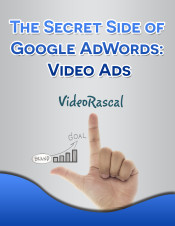Video script writing can be easy and fun and these few tips will help get you started in writing a script that engages viewers and prompts them to take action! Before you get started writing there are two important steps you should take:
Identify the goal of your video.
Write a short sentence describing exactly what you want the viewer to do after watching the video; buy a product, sign up for your newsletter, or click a link for more information. Every word needs to keep this goal in mind.
Imagine a target viewer.
Speak to the person in your script. Create an image in your mind of who you intend to watch your video. Who is he or she? What are his or her needs, problems, and values? Where might he or she be viewing your video – at home or at the office? Why might she be viewing your video?
Now that you’ve outlined your goals and described your target viewer, you can begin organizing your script into six sections.
1. Introduce the story

All videos are about telling a story – even “how-to” videos. Ideally, the story is all about a person with a specific set of problems and how you can help them. Begin a dialogue with your viewer about whatever your imaginary viewer needs or values. You only have between 8 and 10 seconds to capture your viewer’s attention, so you need to connect with your viewer right away. Though watching a video is a one sided process for your viewer, you can create the feeling of personal interaction by speaking directly to him or her as if you were right there making the presentation yourself. Remember your imagined viewer.
Be personal and likable. Ask questions of your viewer to help him or her focus their attention on the problem. If you get your viewer thinking: “Yes, I do have that problem or “Yes, I do need that”, you are on your way. Use personal pronouns wherever possible – you and your. Even if your video is being viewed by a group, each viewer will experience it as an individual.
2. Introduce your offer
Tell your company’s story by explaining why you developed your product or service and why you made this video. Keep this short – your audience might not care who you are until they understand how you can help them with whatever problem or need you just described. Engage your viewer’s emotion rather than their intellect. The purpose of a 2 minute video isn’t to present a lesson in history; it is just to elaborate on a small piece of that history.
3. Describe your product’s features and benefits
Make a short bullet point list of the benefits and features you can offer. What are the features of your product which specifically solve the problem of your target viewer? Four to six bullet points will get the message across without overloading the viewer with information. Try to avoid specific facts and figures in this section – focus on the benefits that your viewer will receive by taking an action. If facts and figures are needed, choose those which reiterate the benefits of your product to your prospect. Explain how these features will help the viewer solve a specific problem he or she is experiencing.
4. Establish credibility and trust by answering objections

Describe particular features of your product which set it apart from the competitors. This is a good place to use a few compelling facts about your product or service as well as to establish trust by demonstrating your understanding of your audience’s needs. Answer 1 or 2 major objections that your target viewer might have. You know by now what objections your prospects usually come up with, even if the only objection might be: “Why should I spend 120 seconds of my time to view your video piece?” Answering objections demonstrates to your viewer that you understand their concerns.
5. Make an initial call to action
Though it may seem obvious to you what the goal of your video is, it may not be so obvious to your viewer. Even if it is, you still need to tell your prospect exactly what he or she needs to do next. So tell them and be specific – don’t be shy about it either.
Some of specific calls to action are: “Click here for more information”, “To be contacted by a representative, please enter your email address below”, etc. Be aware of the exact location on the web page where the video box will appear. Is the link to the side of, within, or below the video box? Web viewers generally don’t like to search a web page for action boxes. The easier to find, the more likely they will use it.
6. Leverage customer testimonials
If you have testimonials or clients who use your service, mention these after your initial call to action. Letting your prospect know who else has benefited from your product or service lends credibility and establishes trust. If you have specific names of clients, be sure that you have their permission to use them as a reference. Thank your viewer for watching and repeat your call to action.
Once you get started, the hardest part of writing a video script is keeping it short – edit, edit, edit. Two minutes goes by very quickly. Stay focused on the goal of the video, focus on key benefits, and present a clear call to action. Have fun with it. Your viewer will enjoy watching your video more if they sense that you had fun making it. Follow these easy steps and your video will be its way toward achieving its intended goal.







